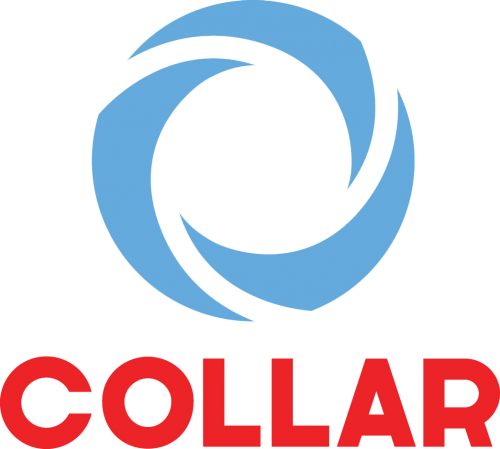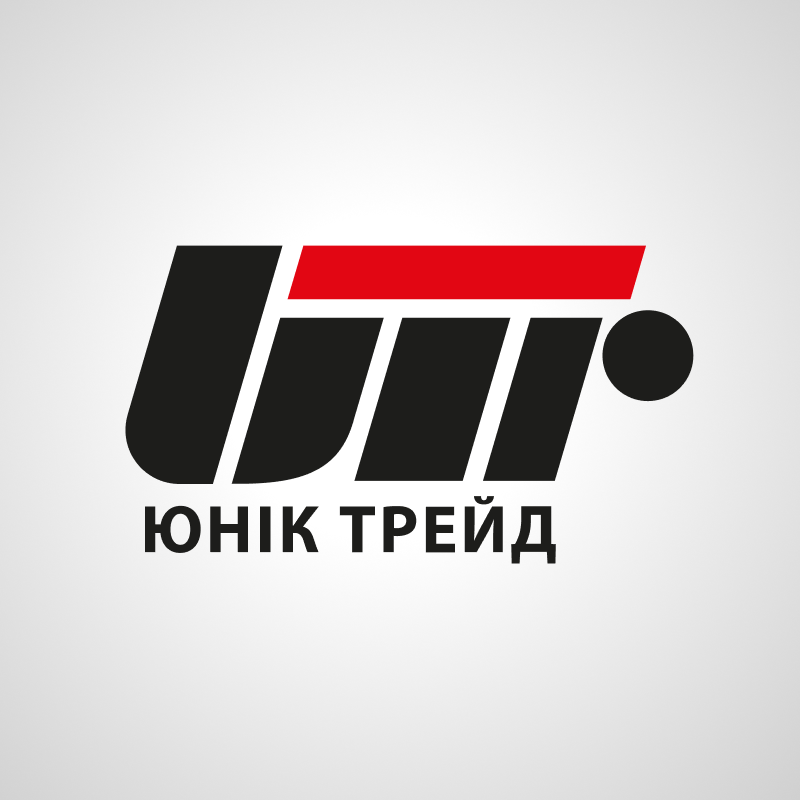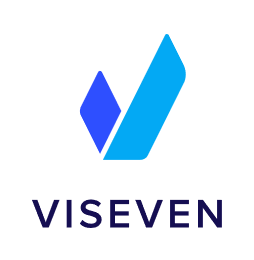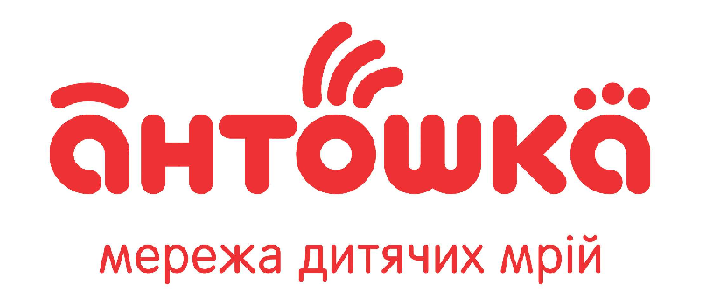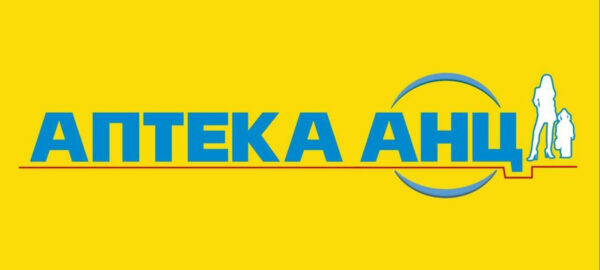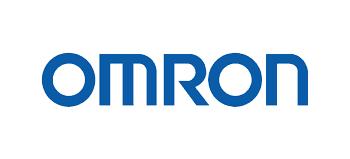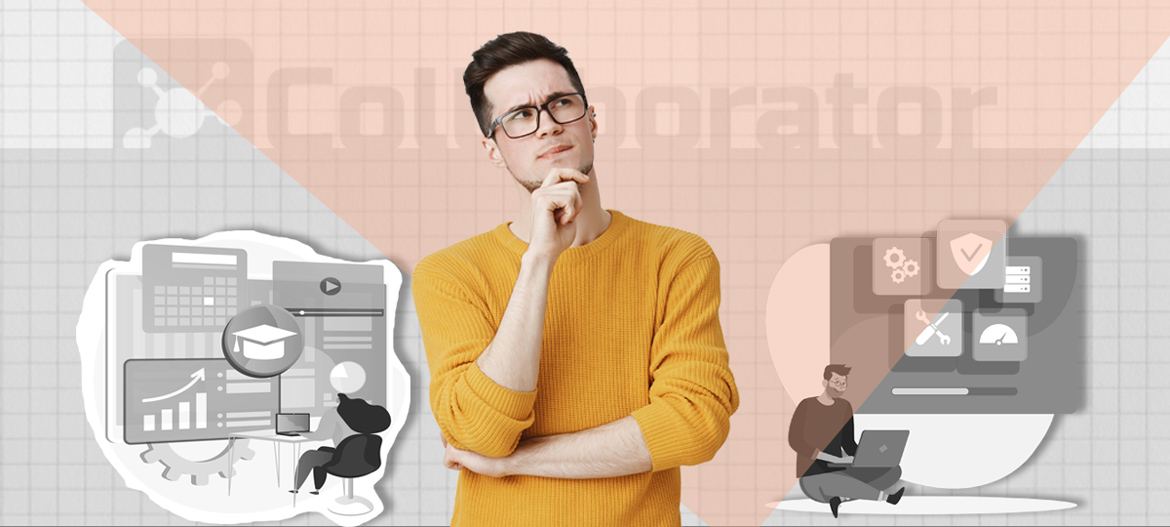
Changing LMS. Strategies and tips from LMS Collaborator specialists
Choosing an LMS is a rather difficult process that requires time and a well-formulated goals and objectives plan. Sometimes it is necessary to try several different systems to find the perfect solution. When the business grows it needs to scale and change processes. Many business tools have limited functionality and inability to adapt to new conditions. It becomes one of the main reasons for searching and migrating to a new LMS platform. The war has added another reason for Ukrainian companies – to find an alternative to Russian software.
For nine years team (ed. LMS Collaborator) has been helping Ukrainian companies to implement corporate e-learning. We always support our customers at all stages of implementation and help in moving from another system to LMS Collaborator. During this time we have accumulated a lot of migration experience, which we would like to share with you.
When should you change the LMS? What to look for when choosing a new system? What pitfalls can be encountered? How to build a successful migration plan? What about the technical component?
We asked three of our experts who will help you find answers to these questions and will tell you about the peculiarities of LMS relocation from the strategic, technical, and administrative sides.
Switching to another LMS: strategy and planning. When it is time to change the LMS and how to access the implementation efficiency
This article is about LMS (Learning Management System) – these information systems are designed to manage learning processes in organizations. Many of you were their users during online studies.
 Myroslav Botsula– CEO & Co-Founder LMS Collaborator, Founder El`Lab
Myroslav Botsula– CEO & Co-Founder LMS Collaborator, Founder El`Lab
First of all, LMS is a tool. And, like any tool, it should be changed when it:
- Does not receive necessary updates and tech support;
- Is difficult to use;
- Unable to provide desirable results for the business
LMS is not a system that directly brings profit to the company (unless it is a business that makes money on learning, of course). It scales, organizes and accelerates learning processes. As a result, it reduces the company’s expenses in the relevant areas of work with personnel.
Migration to a new LMS requires a thoughtful strategy and development of a detailed plan. These are key steps in this process:
Step 1. Transfer of learning base and learning materials.
Step 2. Transfer of all settings of the learning process: learning groups, catalogs, rules for assigning tasks, etc.
Step 3. Transfer of all integrations: with analytics systems, email services, messengers, etc.
It is necessary to prioritize integrations and migrate the most important ones first. The most critical integrations are systems for importing and synchronizing users and organizational structure. Next – integrations with communication tools and analytics systems that are designed to exchange data with LMS and build business dashboards.
Step 4. Synchronizing users and starting learning.
Inform employees about the introduction of the new LMS and organize basic training for them on its use: develop instructions, onboarding courses, manuals.
It is important to organize an internal PR campaign. This will help prepare employees for the new changes and make them interested in learning the new system.
How to evaluate the effectiveness of the new LMS implementation?
It is necessary to determine the КРІs that measure the effectiveness of LMS implementation впровадження LMS. It is different for each organization. It is necessary to understand that not everything depends on the tool-system. Efficiency is influenced by people, business processes, company culture, etc. In other words, we are talking about a set of indicators and a complex dependence between them.
To indicate such indicators, focus on what affects the cost, quality and speed of learning processes. On the things that made you decide to use a new LMS.
Therefore, formulate questions, the answer to which will give a quantitative assessment (or scale) of the desired indicators. Then “measure” these indicators before the implementation of LMS and periodically monitor them, observing the dynamics of their changes.
Examples of such questions:
- On a scale from 1 to 10, how likely would you recommend this LMS as effective? How much time is required for routine tasks to set up learning processes in LMS (in hours)? How long does it take to generate a report on the status of training (in hours)?
- How many times a month do LMS users ask for clarification on how to use the system? At the same time, how many user sessions were there and how much time did users spend in the system? What percentage of these sessions were during and after working hours? What percentage of these sessions were from mobile devices?
- How long does it take to complete the training program? How long does it take for certification? What is the relationship between the change in the training rating and achievements in the LMS and the change in the actual KPIs of employees?
How the LMS Collaborator team helps customers migrate from another system
People choose LMS Collaborator when they want to simplify access to the system for users and integrate LMS with other IT systems of the company.
We do not care what operating system employees work with and what browsers they use. Our system works equally correctly on all devices. We (ed. LMS Collaborator team) provide consulting support to clients, help them learn the system and work effectively in it. In particular, we support the migration from the old system to the new one: we train and help with the transfer of information, settings and synchronization, with the automation of processes.

The experience of replacing the LMS of one of our clients is published here: Changing the e-learning platform from Moodle to Collaborator. Experience of the “D.S.” pharmacy chain

Planning to change the training system and looking for an alternative that can solve the problems of your business? Try LMS Collaborator.
Submit your application, get a free demo access to the portal and a consultation from our managers right now.
The technical aspect of the transition to a new LMS. Pitfalls, requirements to consider and what you need to pay attention to
 Oleksandr Slubsky – CTO&Co-Founder LMS Collaborator
Oleksandr Slubsky – CTO&Co-Founder LMS Collaborator
Pitfalls that may arise during the implementation of the new system
Usually, when companies contact us, the question that worries IT specialists the most is how authorization will take place. And it doesn’t matter if they are migrating from an old LMS or this is their first system. Most large and medium-sized companies have their own SSO (Single sign-on) – one point of authorization. Therefore, it is important for them that the LMS supports such an authorization mechanism.

LMS Collaborator login page
Another question is how users will enter the system. Most companies have HRM systems that keep records of employees. Therefore, it is important that the LMS supports integration with such systems for quick import of users.
Content import is also essential. Namely, that the learning content can be easily downloaded from the old LMS and imported into another. This is possible if the content is stored in SCORM format, which can be uploaded as an archive or in video. For other formats, you need to write a separate code that will allow you to automatically transfer everything or do the transfer manually.
Sometimes there is a request to transfer test and certification results. This is almost impossible, because the test system in each LMS is individual, and it is not standardized in any way. In this case, we advise you to download the user ratings from the previous LMS or HRM system and import them into our LMS to save the results.
Technical requirements that LMS must meet
In the organization of IT processes – it is SLA (Service-level agreement), a document that describes the parameters of the system. For example, in banking SLA is very high. For distance learning systems, this figure is lower, but if the LMS stops working, it can be critical for the company. Often the learning system is combined with the corporate portal of the company, and if this portal does not work – it is problematic.
Also, LMS must meet the standard requirements of security, operating system, server, browser, etc.
What should be considered?
When switching to a new learning platform, you should pay attention to whether it is cloud-based and what SLAs the provider undertakes to provide. The location of data centers and certification of the provider is also important. The technology on which the LMS is developed does not play a big role. More important is how often the system is updated, maintained and monitored.
When a company purchases LMS Collaborator, it immediately gets access to the portal. After that, the technical department of the company sets up authorization, creates learning content and imports users. We recommend making the transition in small focus groups to test all possible features.
Peculiarities of the transition to a new LMS by the user and portal administrator. Criteria for choosing LMS, testing and training
 Viktoria Balachuk – Head of Customer Success, Product Owner LMS Collaborator
Viktoria Balachuk – Head of Customer Success, Product Owner LMS Collaborator
What criteria should you pay attention to when choosing an LMS
Usually, companies think about changing LMS if the system cannot solve its tasks. Therefore, when choosing a new system, we advise you to pay attention to whether the LMS can solve the tasks that the previous one could not cope with. Is it faster, has a more intuitive interface and features that the previous system did not have.
In order to ensure that the new LMS meets the company’s requirements for as long as possible, it is important to look at the future. If possible, predict what tasks or processes will need to be implemented on the basis of LMS in the next few years. For example, the situation is as follows: now the company has implemented training and certification, but in the future it is planned to conduct an assessment of competencies. Accordingly, you need to take into account the need for functionality to work with competencies. Will it be possible to implement these additional tasks with the new system? How will the new LMS be able to scale to meet them?
It is necessary to take into account the possibilities of integration and how the new system can be built into the infrastructure of services that already work in the company. For example, HR systems that transmit user data, systems that collect data and analytics on employees, KPIs, etc. How will the systems be able to exchange data? The technical support of the system is important. How qualitative and operational it is.
System testing peculiarities
Developing a plan for testing the system can significantly reduce the testing time. Make a list of important functions or features in the form of a checklist. Use it during testing, marking the compliance of functions with the requirements. Testing can last for several days, weeks or months. It depends on the tasks set. If the main task of the LMS is to automate training, test the automation functions. If the task is to combine the training portal with the corporate portal, focus on testing the functions of the training and corporate portal.
It is best to conduct testing on a small focus group: assign them a short training, test or course. This will help to analyze the system from the administrator’s side and get feedback from the end user.
We do not recommend shifting the task of testing to one person. If it is planned that the system administrators will be representatives of different departments, it is necessary that each of them test the functionality with which they will work directly.
Since the functionality of LMS systems is quite wide, it is difficult to test and evaluate all its functions during the testing period. First of all, analyze the most important and encourage those who will be involved in the training process to test directly.
Difficulties that arise when switching from one system to another
First of all, it is the customer experience, and this applies to all roles, both ordinary users and administrators. If a person gets used to working in one environment and moves to another, they may feel uncomfortable. It is unusual to work in any new program, you need to learn, no matter how fast, convenient and modern the new system is. This discomfort should be reduced as much as possible. This will help: the creation of training courses, instructions for help on working with the system for users, as well as active communication with technical support for administrators.

Example of learning tasks for working with the system assigned to the user
Advices for companies planning to change the training system
If the company decides to change the LMS, it is necessary to prescribe a detailed plan for the transition to a new platform, which takes into account all the processes from setting up the infrastructure to sending updates to users. It is important to fix deadlines and assign the responsible person for each item.
The main steps:
1. Data transfer.
It is not always possible to automate the process of data transfer. Therefore, before planning it, you should estimate the amount of work to be done. Migration should be done gradually, starting with the most important materials.
2. Setting up integrations.
Setting up all integrations with services that are necessary for work: integration with HR systems, messengers, webinars, analytical systems, etc.
3. Portal design.
Setting up the portal in accordance with the corporate style and brand book.
4. Setting up the authorization process.
Using SSO technology will help to simplify user authorization in the system.
5. Organization of the support.
Leave contacts and communication channels on the portal login page, or on the main page, where employees can ask for help if they have any questions about working with the system.
6. Users training.
Before launching the new portal, prepare all employees for it. Make sure everyone knows their accounts, and has received instructions on how to log in and work with the new system.
Conclusion
Dear colleagues, we understand that moving/replacing to a new LMS is not an easy task. Our experts have highlighted the most important points in the material, but, of course, each case is individual. Therefore, we remember the “basics”, and then the training department together with the LMS technical support team will have important cooperation – moving, setting up and launching.
- Developing a detailed migration plan will help ease the transition to a new LMS. A successful plan should consist of the following key steps: transferring learning content, settings, integrations, and synchronizing users.
- Importing users and content is the main problem that companies face when migrating to a new LMS. Support for LMS integration with HRM systems will help speed up the import of users. And creating training content in SCORM format will facilitate its transfer to the new system.
- While switching to a new learning platform, pay attention to whether it is cloud-based, what SLAs the provider undertakes to provide and whether it is certified. Another important criterion is regular updates and technical support.
- While choosing a new system, consider the prospect – whether this LMS will be able to solve additional business tasks and, if necessary, scale to more global tasks.
- Developing a test plan in the form of a checklist will reduce the time to test the system. Test on small focus groups to analyze the system from the administrator’s side and get feedback from the end user.
- To facilitate the first experience of using LMS, prepare training courses and instructions. It is also important to contact technical support.
If you have any questions or want to consult on migration, submit an application for a trial period.
LMS Collaborator specialists will help and support your migration from the old system: transferring information, settings and synchronization.
Submit an application and make sure of it in practice.
Try LMS Collaborator


